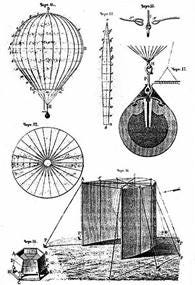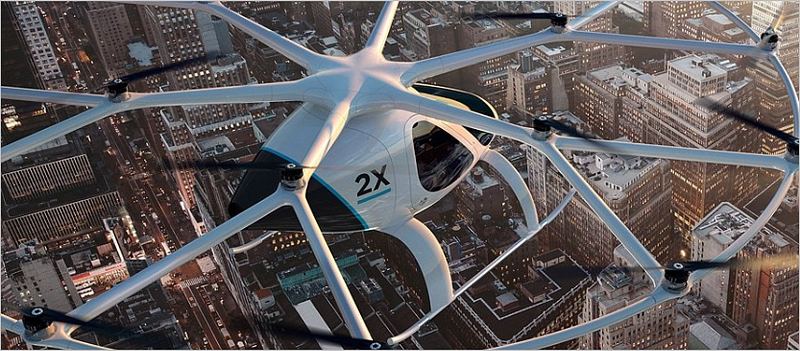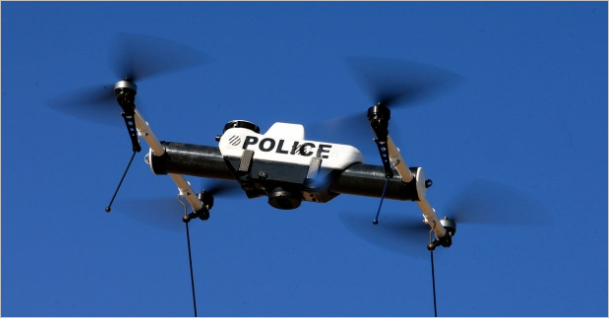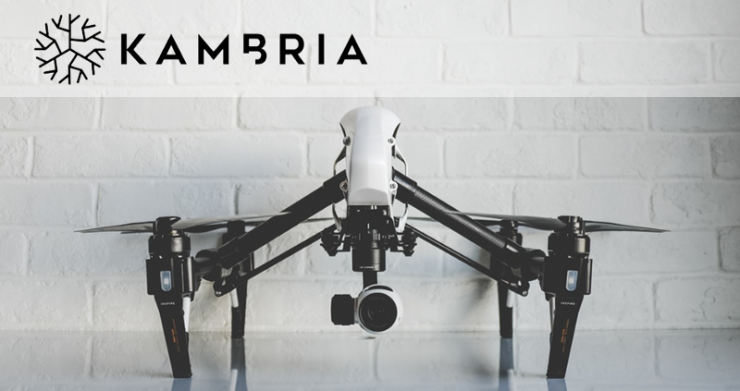With all of the innovations being developed today, people often wonder what our near future will look like and which technologies will be implemented on a large scale to simplify and improve our lives. What role will drones play? Let me paint a picture…
It is the year 2035 and Bob is looking forward to visiting his friend Alice. Upon waking, he goes into the bathroom to brush his teeth and receives the latest news through his bathroom mirror. Bob lives in Paris but Alice lives in Amsterdam in a house built using 3D-printer technology. Bob could arrive at Alice’s house using an autonomous car service or take a drone helicopter taxi. But instead of traveling for six hours, he decides to use the Hyperloop and pay for his ticket with Bitcoin. Traveling by Hyperloop will only take 30 minutes! At the Hyperloop station, a Humanoid robot preps Bob for his ride by giving him specific details. When Bob arrives, Alice is bed bound due to an unfortunate electric scooter accident. But she pre-approved Bob’s entrance to her home using his smartphone so Alice doesn’t have to trouble herself.
So what do you think? Does this slice of the future seem possible to you? I certainly believe it is; developers are already working on developing and tweaking all of these solutions. So it’s quite possible that they will be regulated and implemented into our society in the next 20 years. Let’s take a look at recent developments in the drone industry with an emphasis on projects that may change our lives for the better. To get everyone up to speed, I’ll provide a brief history of drones.
History

The first drone or unmanned aerial vehicle (UAV) was created by the Austrian military during World War I. The idea was to fill unmanned balloons with bombs and have them explode in the enemy’s territory. Unfortunately for the Austrians, the plan somewhat backfired when some of the balloons exploded in their own lines, killing several Austrian soldiers.
After being used my military-based operations for about a century, drones began to gain popularity in other fields and became more than just a warfare product. The consumer market greatly expanded as the quality of drones and added features consistently improved with ‘unicorn’ startup DJI leading the way. Over the years, drone technology has been introduced into various types of industries (discussed below), and the total market capitalization of commercial applications is over $ 127 billion U.S.
Drones have also become a part of social interactions as well through the countless drone competitions in which participants fly a specific parkour to become the best UAV-racer.
To provide developers, manufacturers, and end-users guidelines on how to handle these air-based robots, several countries have already implemented legislation regarding operating a drone.
Drone Verticals
The drone industry has entered the specialization phase which allows for various verticals to emerge. Let’s take a look at different industries where drones are implemented in various business models.

Transportation and Delivery Sector
The steady pace of urbanization in big cities around the world means massive traffic congestions, which no one likes! The number of cars on the road increases every day, leading to more traffic accidents and casualties. Luckily, various companies are trying to solve these issues by offering innovative solutions. Passenger drone project Volocopter has already finished a successful pilot study in Dubai. And Chinese manufacturer Ehang is also ready to offer its passenger drone to the public.
Amazon has officially started piloting Amazon Air, a delivery system whose goal is to deliver packages up to five pounds in 30 minutes or less using drones! As Amazon claims, “It looks like science fiction, but it’s real. One day, seeing Prime Air vehicles will be as normal as seeing mail trucks on the road.”
Supplying survivors of natural disasters with emergency aid kits has become easier with the help of cargo drones. Californian startup Matternet sent its cargo drones filled with food and medicine to Haiti after the country’s massive destructive earthquake back in 2010. And the United Nations World Food Program is a firm believer in deploying cargo drones to help feed those stuck in war zones.
Healthcare Industry
Drones in the healthcare industry have already proven to be very useful in life-threatening situations. In the future, small indoor drones will be used to deliver the required daily medicine to bed-bound patients or nutritious, fresh meals to the elderly who cannot cook their own meals. In Rwanda, the Ministry of Health has teamed up with Silicon Valley-based robotics company, Zipline, to start the “Uber for blood”, a drone delivery service that delivers blood to hospitals in need of blood. If services run smoothly, Zipline will start another pilot in Tanzania.
TU Delft University is developing an Ambulance Drone, a “flying toolbox” carrying supplies for advanced life support. The drone can transform into a fully functioning automated external defibrillator (AED). As research has shown, the first few minutes after someone suffers a heart-attack are critical. By calling the emergency services, the ambulance drone can be deployed immediately to the person in need.

Government Solutions
Drones can be helpful to a police department on many fronts, like: monitoring hostile situations, locating victims after a disaster with the help a thermal camera-equipped drone, helping with the reconstruction of a multiple-car traffic accident, monitoring a crowd or analyzing a crime scene. And, according to pilot studies, fire departments can benefit from using drones to fight fires by connecting to hoses from water trucks on the ground, reaching far higher than ladders.
Energy Industry
Drone developments in the energy industry are also ongoing. Drones are cleaning wind turbines, which can improve production by up to 20%. By mapping oil spills or even locating potential oil and gas sites, drones can be used to simplify processes and lower cost.
Kambria
At Kambria, we are passionate about supporting the development of frontier technologies. Drones are one of the main verticals we will target in the future.

By creating an open innovation ecosystem that incentivizes R&D collaboration, collaborating and incentivizing in research and development (R&D), Kambria aims to eliminate waste and inefficiencies that haunt the advanced technology industries.
Kambria offers an open source architecture where developers, manufacturers, universities, governments, innovators, and token users come together and form a community that rewards its contributors in native KAT tokens. Kambria’s codebase (K-DNA) which is the center of the platform, has all the key ingredients to start developing and deploying advanced technologies.
Kambria can help drone businesses accelerate by working together, sharing helpful information and resources and incentivizing people that contribute to the community. Whether it is developing new modes for transportation, providing the opportunity to build upon already existing healthcare devices, or speeding up the process of creating life-saving solutions, all can be facilitated by the Kambria platform.
A big part of Kambria’s business plan is focused on working together with universities. Kambria has already established partnerships with renowned universities worldwide that work on creating innovative and ground-breaking developments in the robotics and AI industry. Carnegie Mellon University, Stanford University, and Nanyang Technological University are three of the top universities that collaborate with Kambria.
In the meantime, the team is not sitting idle. Currently, the Kambria team is working on creating a low-cost, high-performance robotic arm that will be able to manipulate objects in the real world. At the same time, they are developing autonomous navigation which will enable food delivery robots and hotel room service robots.
As you can see, the drone vertical has enjoyed a steady increase in development over the years. Commercial and enterprise developed drones can solve many real-world problems. What do you believe will be the next drone invention that will disrupt this frontier technology?
The Kambria Team
Website: https://kambria.io/
Whitepaper: http://bit.ly/2JbuET7
Telegram (ENG): https://t.me/kambriaofficial
Telegram (KOR): https://t.me/KambriaKorea
Telegram (VIE): https://t.me/KambriaVietnam
Telegram (CHN): https://t.me/KambriaChina
Twitter: https://twitter.com/KambriaNetwork
Facebook Page: https://facebook.com/KambriaNetwork
Facebook Group: https://www.facebook.com/groups/kambria/
Discord: https://discord.gg/rjqDSdC
Reddit: https://www.reddit.com/r/KambriaOfficial/
Medium (ENG): https://medium.com/kambria-network
Medium (CHN): https://Medium.com/kambriachina
Steemit: https://steemit.com/@kambrianetwork
Weibo (CHN): https://www.weibo.com/kambriachina
Email: info@kambria.io
KAT is sold to be used on the Kambria platform.









